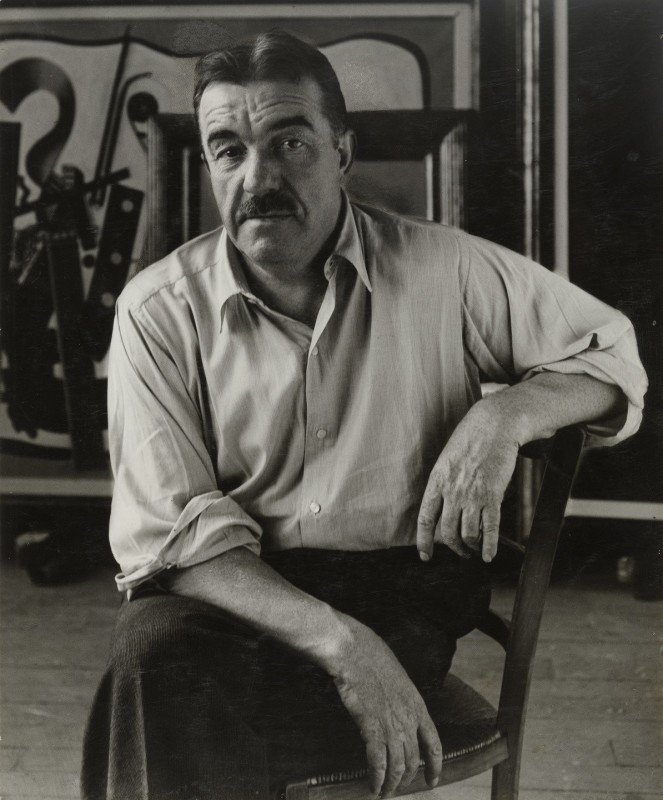Born at Argentan, Normandy, he was apprenticed to an architect in Caen, 1897-9, and then worked as a draughtsman in an architect's office in Paris, 1900-2, and as a photographic retoucher, 1903-4. In 1903 he failed the entrance examination for the École des Beaux-Arts, Paris, and studied at the École des Arts Décoratifs and the Académie Julian. From c. 1909 he was associated with the Cubists and from 1911 was a member of the informal Puteaux group. In 1913 he signed a contract with Kahnweiler. During his Cubist period his tubular and curvilinear abstractions contrasted with the rectilinear forms preferred by Picasso and Braque and c. 1911 he was the first of the Cubists to experiment with non-figurative abstraction. After having been gassed in the war he was discharged in 1917 and formed a friendship with Le Corbusier and Ozenfant. He collaborated with Ozenfant in the atelier libre and in 1925 he exhibited at Le Corbusier's Pavillon de l'Esprit Nouveau. In 1925 also he did mural decorations in collaboration with Delauney for the entry hall of the exhibition 'Les Arts Décoratifs'. During this period of his association with the leaders of the Purist movement his work exemplified the 'machine aesthetic' which Purism stood for. His paintings were static, with the precise and polished facture of machinery, and he had a fondness for including representations of mechanical parts. During the late 1920s and 1930s he also painted single objects isolated in space and sometimes blown up to gigantic size. He also busied himself with theatrical décors, especially for the Ballets Suédois, and with the cinema. His Ballets mécanique (1924) was the first film without scenario. During the Second World War he lived in the U.S.A., teaching at Yale University together with Henri Focillon, André Maurois and Darius Milhaud, and at Mills College, California. His paintings at this time consisted of compositions featuring mainly acrobats and cyclists. From his return to France in 1945 his painting reflected more prominently his political interest in the working classes. But its static, monumental style remained, with flat, unmodulated colours, heavy black contours and a continuing concern with the contrast between cylindrical and rectilinear forms. In 1949 he opened a studio for ceramics with his former pupil Robert Brice and made there his glass mosaic for the University of Caracas (1951). A Léger Museum was founded in his honour at Biot, with large ceramic panels designed by him. Memorial retrospective exhibitions were given at the Musée des Arts Décoratifs, Paris, in 1956 and at the Haus der Kunst, Munich, in 1957. Although in his Cubist years Léger started with the concept of art as an autonomous activity, during his war years his contact with men of different social classes and different walks of life came as a revelation to him. 'I was abruptly thrust into a reality which was both blinding and new,' he said. Henceforward he made it his ambition to create an art which should be accessible to all ranks of modern society. He saw the poetic value that lies in the clear delineation of everyday objects, the intrinsic beauty of modern machinery and the things which are mass produced by machinery, and he favoured proletarian subjects, depicting them with the same clarity and precision as the themes taken from machine culture. His views were best expressed in a lecture delivered in 1923 at the College de France: 'The Aesthetics of the Machine: Manufactured Objects, Artisan and Artist.' His influence on the artists of his day was far-reaching and very diversified.
